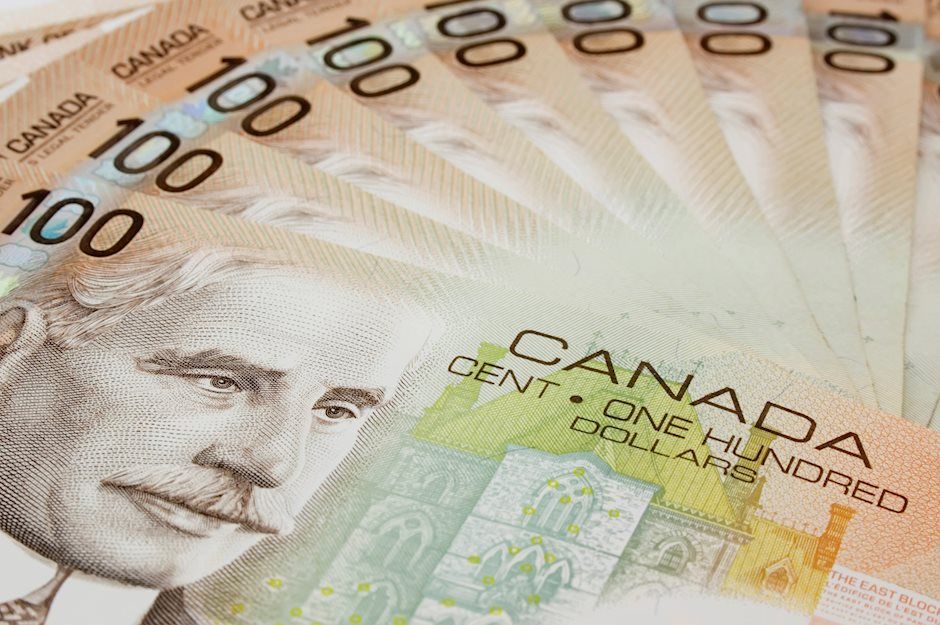USD/CAD depreciates to near $75.50 due to a recovery in Oil prices, Fed decision awaited
- USD/CAD loses further as higher Oil prices support the commodity-linked Canadian Dollar.
- WTI rebounded from an eight-week low of $74.24 due to rising geopolitical tensions in the Middle East.
- The Fed is expected to keep rates unchanged at its July meeting.

USD/CAD extends its losses after retreating from an eight-month high of 1.3865 on Monday, trading around 1.3840 during the Asian session on Wednesday. The recovery in crude Oil prices is supporting the commodity-linked Canadian Dollar (CAD) against the US Dollar (USD), as Canada is the largest crude exporter to the United States.
West Texas Intermediate (WTI) crude Oil price trades around $75.40 per barrel by the press time. WTI rebounded from an eight-week low of $74.24 recorded on Tuesday, attributed to rising geopolitical tensions in the Middle East.
The Israeli government claims it killed Hezbollah's most senior commander in an airstrike on Beirut on Tuesday, in retaliation for Saturday's cross-border rocket attack on Israel. This escalation occurred despite diplomatic efforts by US and UN officials to prevent a major conflict that could inflame the wider Middle East, according to Reuters.
Scotiabank’s Chief FX Strategist, Shaun Osborne, noted that the CAD is contending with a significant wave of negative sentiment. “The latest CFTC data showed a substantial buildup of bearish CAD positioning. While positioning appears excessive, the weak sentiment is largely a reflection of the Bank of Canada’s easing bias.”
Read the full article: Bears can break below 1.3835 in short term – Scotiabank
On data front, Canadian Gross Domestic Product (MoM) data for May is scheduled to be released on Wednesday. On the USD front, the Federal Reserve is expected to keep rates unchanged in the upcoming meeting later in the North American session.
However, there is growing anticipation of a rate cut in September, putting downward pressure on the US Dollar. Additionally, signs of cooling inflation and easing labor market conditions in the United States are further fueling expectations of multiple rate cuts by the Fed this year, potentially totaling three cuts. CME FedWatch Tool indicates a 100% probability of at least a quarter percentage point cut in September.
Canadian Dollar FAQs
The key factors driving the Canadian Dollar (CAD) are the level of interest rates set by the Bank of Canada (BoC), the price of Oil, Canada’s largest export, the health of its economy, inflation and the Trade Balance, which is the difference between the value of Canada’s exports versus its imports. Other factors include market sentiment – whether investors are taking on more risky assets (risk-on) or seeking safe-havens (risk-off) – with risk-on being CAD-positive. As its largest trading partner, the health of the US economy is also a key factor influencing the Canadian Dollar.
The Bank of Canada (BoC) has a significant influence on the Canadian Dollar by setting the level of interest rates that banks can lend to one another. This influences the level of interest rates for everyone. The main goal of the BoC is to maintain inflation at 1-3% by adjusting interest rates up or down. Relatively higher interest rates tend to be positive for the CAD. The Bank of Canada can also use quantitative easing and tightening to influence credit conditions, with the former CAD-negative and the latter CAD-positive.
The price of Oil is a key factor impacting the value of the Canadian Dollar. Petroleum is Canada’s biggest export, so Oil price tends to have an immediate impact on the CAD value. Generally, if Oil price rises CAD also goes up, as aggregate demand for the currency increases. The opposite is the case if the price of Oil falls. Higher Oil prices also tend to result in a greater likelihood of a positive Trade Balance, which is also supportive of the CAD.
While inflation had always traditionally been thought of as a negative factor for a currency since it lowers the value of money, the opposite has actually been the case in modern times with the relaxation of cross-border capital controls. Higher inflation tends to lead central banks to put up interest rates which attracts more capital inflows from global investors seeking a lucrative place to keep their money. This increases demand for the local currency, which in Canada’s case is the Canadian Dollar.
Macroeconomic data releases gauge the health of the economy and can have an impact on the Canadian Dollar. Indicators such as GDP, Manufacturing and Services PMIs, employment, and consumer sentiment surveys can all influence the direction of the CAD. A strong economy is good for the Canadian Dollar. Not only does it attract more foreign investment but it may encourage the Bank of Canada to put up interest rates, leading to a stronger currency. If economic data is weak, however, the CAD is likely to fall.
Author

Akhtar Faruqui
FXStreet
Akhtar Faruqui is a Forex Analyst based in New Delhi, India. With a keen eye for market trends and a passion for dissecting complex financial dynamics, he is dedicated to delivering accurate and insightful Forex news and analysis.
















